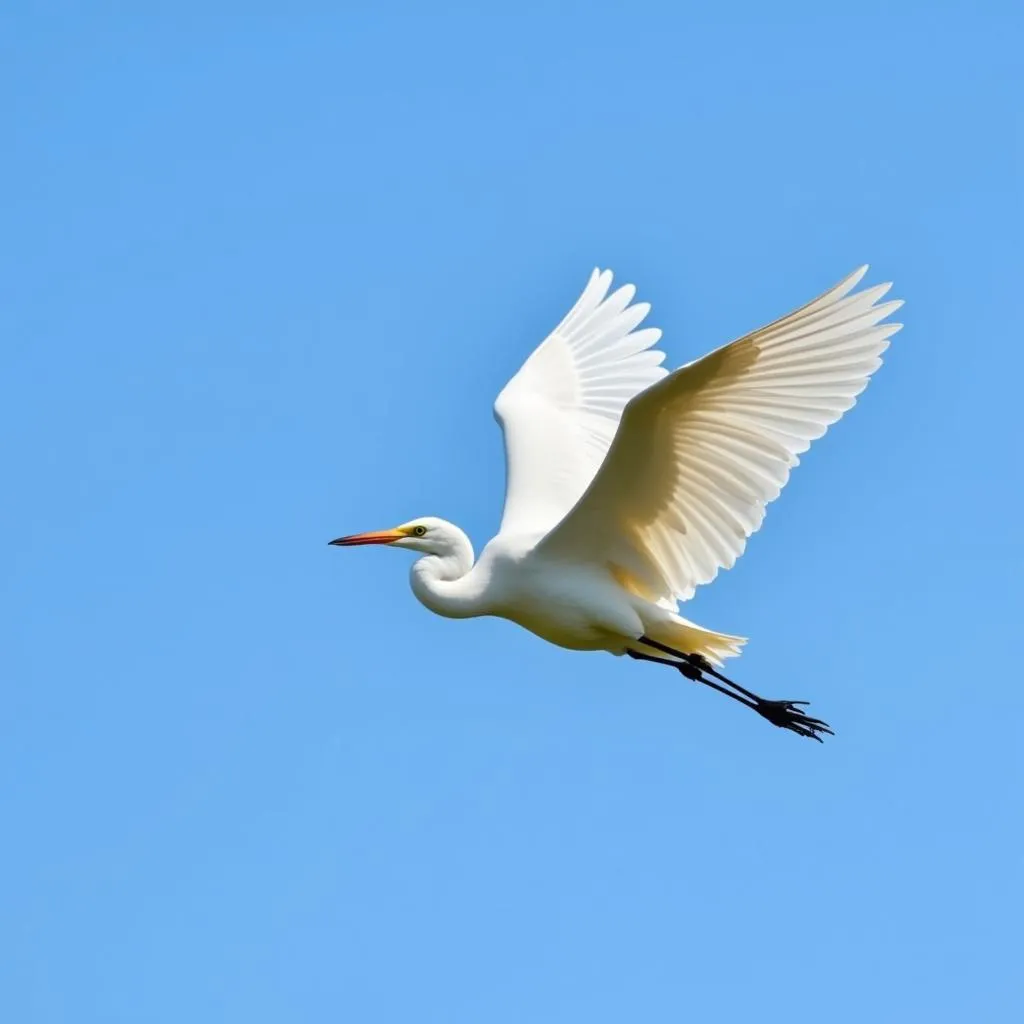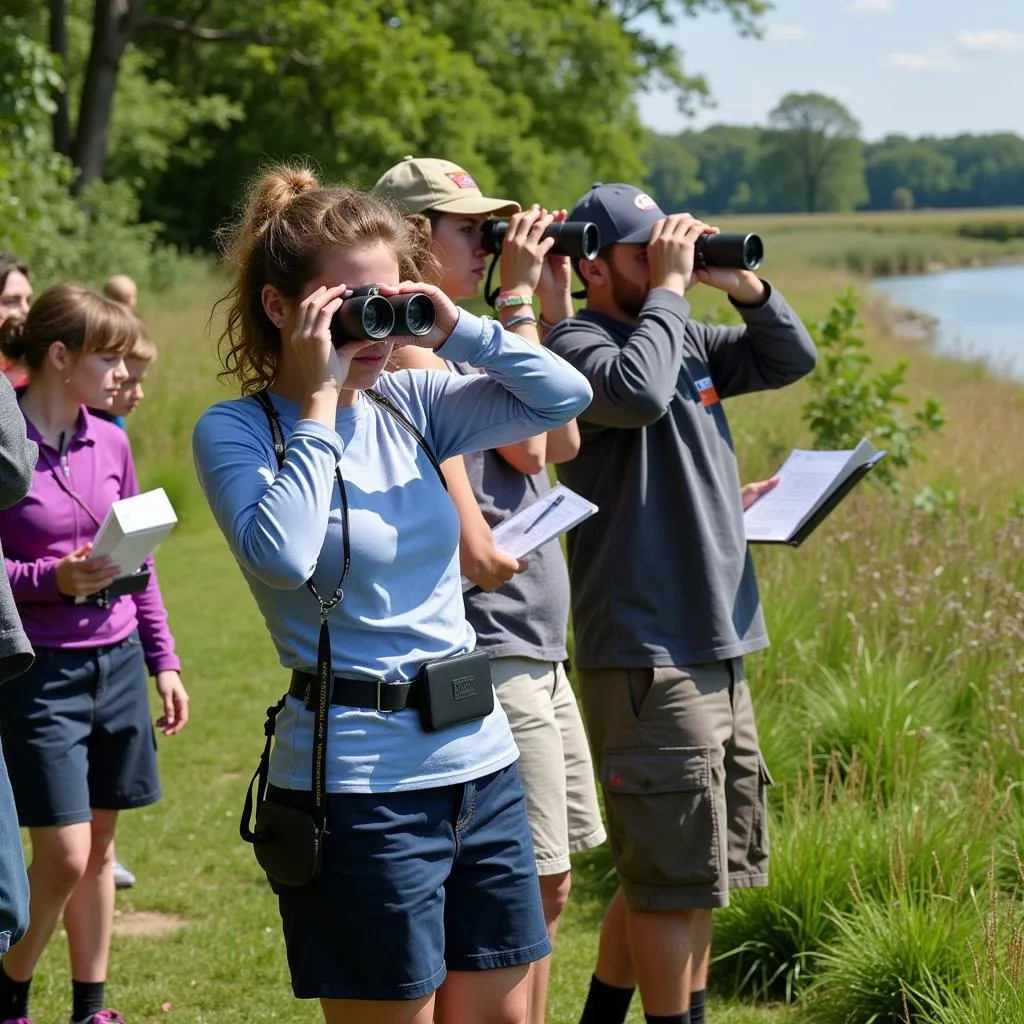The bird symbol of the National Audubon Society, a majestic Great Egret in profile, is instantly recognizable to millions. This simple yet powerful image represents a century-long commitment to bird conservation and environmental protection. But what does the bird symbol truly signify, and how does it embody the Audubon Society’s mission to protect birds and their habitats for future generations?
The Great Egret: A Symbol of Resilience and Hope
The National Audubon Society, founded in 1905, chose the Great Egret as its emblem for a poignant reason. In the late 19th century, this elegant wading bird with its snowy plumage and graceful demeanor faced near extinction. The demand for their feathers for fashionable hats had driven plume hunters to decimate their populations.
The Audubon Society emerged from a wave of public outrage against this unsustainable practice. By advocating for the protection of the Great Egret and other bird species, the organization helped turn the tide. The egret’s recovery became a testament to the power of collective action and the importance of safeguarding our natural heritage.
 Great Egret Soaring
Great Egret Soaring
The Audubon Society’s Mission: Conservation Through Advocacy and Education
The bird symbol embodies the core of the National Audubon Society’s mission: to conserve and restore natural ecosystems, focusing on birds, other wildlife, and their habitats. This mission is carried out through a multifaceted approach:
- Advocacy: The Audubon Society actively engages in policy work, advocating for legislation and regulations that protect birds and their environments.
- Science: The organization conducts scientific research to inform conservation efforts and understand the threats facing birds.
- Education: Through educational programs, publications, and community engagement, the Audubon Society raises awareness about birds, their importance, and how to protect them.
Why Birds Matter: Indicators of Environmental Health
The National Audubon Society focuses on birds because they are excellent indicators of environmental health. Their well-being is directly tied to the health of ecosystems that we all rely on.
- Biodiversity: Birds play a vital role in maintaining biodiversity, acting as pollinators, seed dispersers, and pest controllers.
- Ecosystem Services: Their presence contributes to healthy forests, wetlands, and grasslands, which in turn provide clean air, clean water, and climate regulation.
- Early Warning System: Changes in bird populations can alert us to broader environmental problems, such as habitat loss, pollution, and climate change.
 Birdwatching for Conservation
Birdwatching for Conservation
Joining the Flock: How You Can Make a Difference
The National Audubon Society’s bird symbol is a call to action, reminding us that we all have a role to play in bird conservation. Here are ways you can join the flock:
- Support the Audubon Society: Become a member, donate, or volunteer to support their conservation efforts.
- Create Bird-Friendly Habitats: Plant native plants, provide water sources, and make your yard a haven for birds.
- Reduce Your Environmental Footprint: Conserve water, reduce energy consumption, and choose sustainable products to lessen your impact on bird habitats.
- Spread the Word: Educate others about the importance of birds and inspire them to take action.
Conclusion: The Bird Symbol as a Beacon of Hope
The bird symbol of the National Audubon Society serves as a powerful reminder that conservation is an ongoing journey. It signifies the success stories, like the Great Egret’s recovery, that demonstrate the impact of collective action. By embracing the values symbolized by this iconic emblem – hope, resilience, and a commitment to protecting our natural world – we can ensure that birds continue to grace our skies and enrich our lives for generations to come.